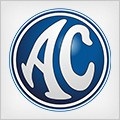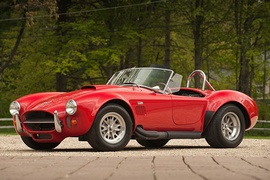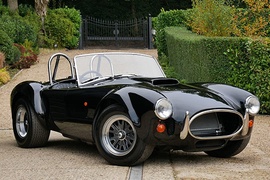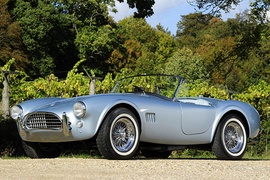
AC Cobra
Generations Timeline, Specs and Pictures

The 1965 AC Cobra MK III opened a new chapter in the carmaker’s history and it proved that an alliance between a British and an American carmaker can work.
After Carroll Shelby stepped inside the AC Cars in 1961, the faith of the British carmaker was changed forever. The notorious American racing driver noticed the car’s abilities on the track. Ford also hired him to create a car that could beat the Corvette in their home-ground and win the LeMans race.
The third generation of the AC Ace was based on a new chassis, which was more rigid than the previous one. Its suspension featured coil springs instead of transverse leaf-spring. AC Cars already modified the bodywork and enlarged the fenders to accommodate wider wheels. Depending on the engine version, the car sported a bull-bar at the front, or just a pair of “horns” to protect the lights, aluminum bodywork. In the rear, AC Ace featured two small, round lamps for turn-signals and brake-lights.
Its cabin was fitted with two low-mounted bucket seats separated by a tall transmission tunnel. The dash panel featured five gauges and a clock mounted on the center, and a tachometer installed in front of the driver. The speedometer was on the outer side of the panel, next to the door. In a race, that was the least important information.
Under the hood, Ford installed a choice of two engines: a 4.7-liter and a 7.0-liter unit. While the former was less powered, it still provided enough power to make the 1100 kg (2425 lbs) vehicle past-rocket most of the other sports cars from that era. The 7.0-liter V-8 installed in the AC 427 managed to do a 0-100-0 mph (0-160-0 kph) test in less than 15 seconds.

The original AC Ace was introduced by AC in 1953 and became one of the best-known British roadsters in the world, with an American heart.
There are not too many cars in the world that could show the same motorsport pedigree as the AC Ace. That roadster mainly was known as AC Cobra after Carroll Shelby’s involvement in producing V-8 powered British roadsters in the U.S.
For any petrolhead, an AC Ace doesn’t need a badge to be recognized. Its round headlights and rounded shapes were unique. There was no roof, no B-pillars, and no fancy aerodynamic package with big wings or spoilers around. Surprisingly, it had doors but no door-handles. Unlike any other modern supercar, it sported the same chromed “horns” used as the front bumper. In the back, it used similar round lamps as the original 1958 AC Ace. But most importantly, the carbon-fiber bodywork was lighter than the original aluminum one. It was made into a modern factory in South Africa, with very narrow panel gaps.
Inside, two leather-clad bucket-seats were separated by a tall center console, which covered the transmission tunnel. The 2020 AC Cobra Mk IV featured a flat dash panel with most of the gauges installed in the middle. The carmaker mounted only the speedometer and tachometer in front of the driver. A three-spoke steering wheel without any airbag was the only option available. At least, the car had seatbelts.
While the original AC Cobra featured a 427 Ford V-8 engine, the revived AC Mk IV was powered by a 6.2-liter GM engine paired to a six-speed manual transmission. Unofficial figures stated a four-second time for 0 to 60 mph (0 to 97 kph) and ten seconds flat for 0-100 mph (0-168 kph).

AC introduced an updated version for its Ace roadster version in 1962 and fitted it with a Ford 289 engine in the following year, offering a better mix of beauty and performance.
After Carroll Shelby visited the AC factory, things started to get better for the small British carmaker. A contract with Ford led to a new market in the U.S. In the U.K., the base version was powered by a Ford inline-six engine, while for the American customers, the base model featured a Ford V-8, paired with a four-speed manual.
Along with the MKII version, AC made a few modifications to the bodywork. At the front, a grid-like grille filled the oval-shaped space in the front fascia. It featured the same horn-type front bumper with a chromed, metallic circular bar. The carmaker added side vents on the front fenders to help engine cooling.
The cockpit featured a few upgrades. Its hinges were not exposed as on the Mark I. The T-shaped, three-spoke steering wheel was new, replacing the Y-type three-spoke one built until 1962. AC chose a new supplier for the bucket seats, with a higher bolstering.
Under the hood, AC Cobra featured a Ford 4.7-liter engine, also known as Ford-289 (289 cu-in). Along with the facelifted version, AC used a new rear axle with inboard disc brakes to reduce the unsprung masses. Also, due to new reinforcements, the MkII was heavier by 134 kg (295 lbs) than its predecessor.























































